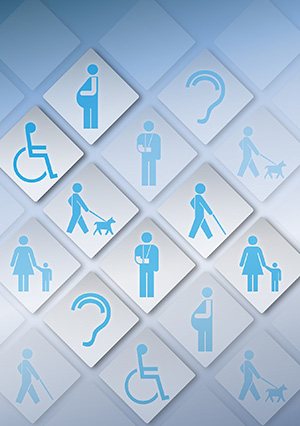Website designer Ocean County professionals are increasingly prioritizing accessibility as part of their creative process. This shift reflects a growing recognition of the diverse needs of web users, including those with disabilities. It also underscores a commitment to inclusivity in the digital realm. The concept of accessibility in web design extends beyond mere compliance with legal requirements. It embodies a philosophy that values every user’s experience. Ocean County’s web designers are at the forefront of this movement, integrating modern techniques and tools to ensure websites are navigable, understandable, and interactive for all. This article delves into the strategies and practices adopted by these professionals. By focusing on accessibility, Ocean County website designers are enhancing the user experience for individuals with disabilities. Furthermore, they are setting new benchmarks for functionality, aesthetics, and ethical design in the digital world.
Things to Consider When Designing an Accessible Website
When considering accessibility in web design, it’s essential to ensure that your website is usable and comprehensible to as many people as possible. This includes those with various disabilities. Accessibility addresses various disabilities, including visual (like blindness or low vision), auditory (deafness or hard of hearing), motor (difficulty in movement or using a mouse), and cognitive (learning disabilities or neurodiversity). Designing for accessibility means considering the needs of all these groups. In terms of visual accessibility, website designers need to keep in mind things like font size, color contrasts. Auditory accessibility can include things like subtitles and transcripts. Additional concerns that web designers need to keep in mind are things like seizure safety, accessible forms, and responsive design. When it comes to designing a website, there is much more think about than the design and functionality.
How Website Designer Ocean County Professionals Make Sites Accessible
For website designers, there is a set of guidelines known as the WCAG-Web Content Accessibility Guidelines. These guidelines are developed by the World Wide Web Consortium (W3C) to provide a standard for web content accessibility. They are often referred to in three levels: A, AA, and AAA, with AAA being the highest (and most stringent) level of accessibility. The more accessible a website, the wider the audience. Website creators can achieve this in a variety of ways.
- Readable and Navigable Content: This includes using clear fonts, ensuring sufficient contrast between text and background, and organizing content in a logical structure. Proper use of headings, lists, and links is essential for users who navigate with screen readers.
- Alternative Text for Images: Providing alt text for images is crucial for those with visual impairments. Alt text should accurately describe the image content or function, enabling screen reader software to convey this information to the user.
- Keyboard Navigation: Many users with motor disabilities rely on keyboards instead of a mouse. Ensuring that all interactive elements are accessible via keyboard, including menus, buttons, and forms, is essential.
- Accessible Forms: Labels should be clearly associated with their respective form controls, and instructions should be provided when specific format inputs are required (like date formats).
- Use of ARIA (Accessible Rich Internet Applications) Roles and Properties: ARIA helps improve the accessibility of dynamic content and complex user interface controls developed with Ajax, HTML, JavaScript, and related technologies.
- Responsive Design: This ensures that web content is easily viewable and navigable on a variety of devices, including mobile phones, which is particularly important for users with certain physical disabilities.
- Multimedia Accessibility: Providing captions for videos and transcripts for audio content is important for users with hearing impairments.
- Legal Compliance: In many regions, web accessibility is not just good practice but a legal requirement. Laws like the Americans with Disabilities Act (ADA) in the U.S. and the Accessibility for Ontarians with Disabilities Act (AODA) in Canada require certain websites to be accessible.
Website Designer Ocean County Professionals Create Websites for Everyone
As we explore the myriad ways in which website designer Ocean County professionals are integrating accessibility into their work, it’s clear that this focus is more than a trend. Accessibility standards and technologies are constantly evolving. It’s important for designers to stay informed and continuously improve their skills in this area. By crafting websites that are accessible to all, regardless of ability, designers are creating a more equitable digital landscape. Their efforts serve as a guide in the industry towards a future where digital spaces are universally accessible. This commitment to accessibility in web design not only enhances the online experience for users with disabilities. It also enriches the web environment for everyone. The work of Ocean County website designers in prioritizing accessibility is not just about adhering to standards. It’s about forging a path towards a more inclusive and empathetic digital world.




0 Comments